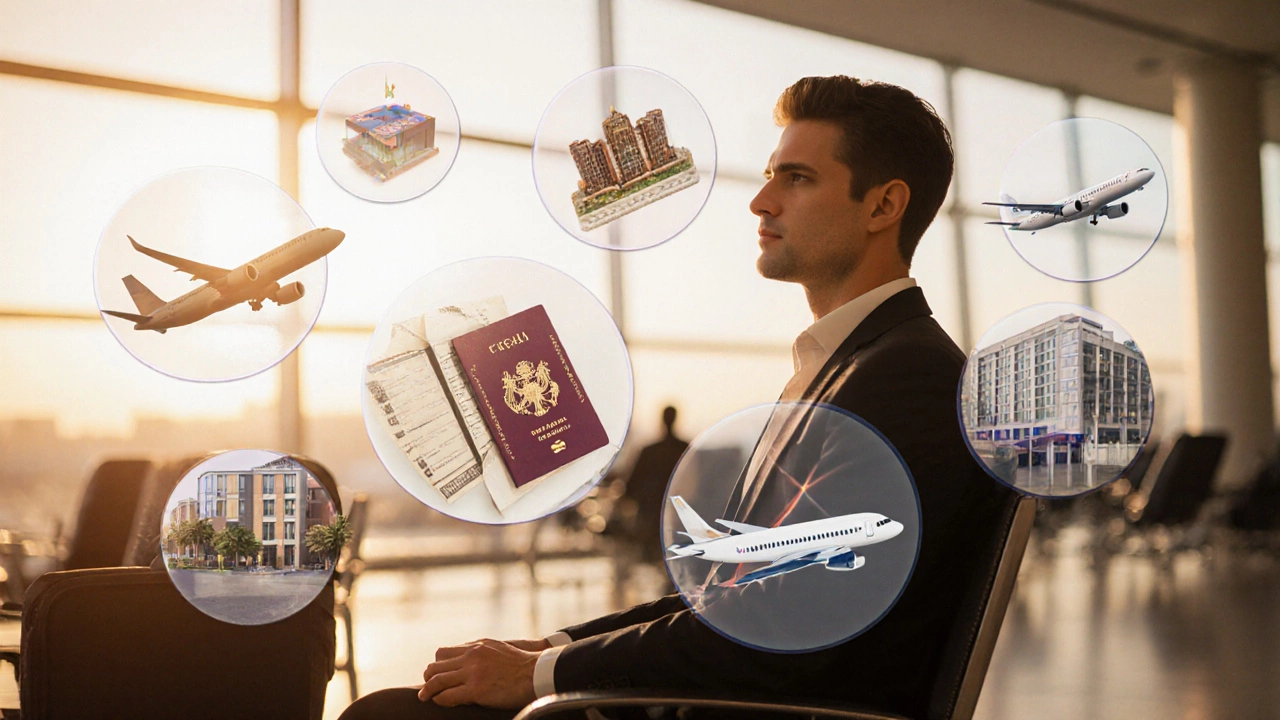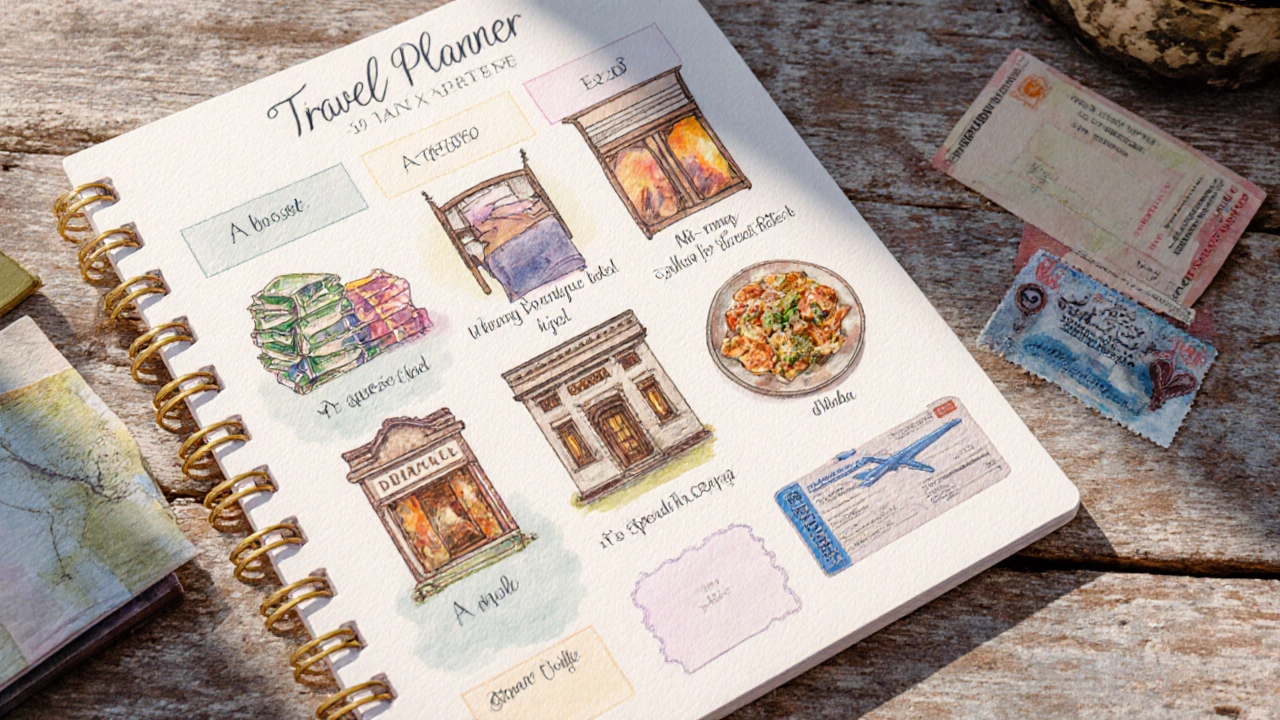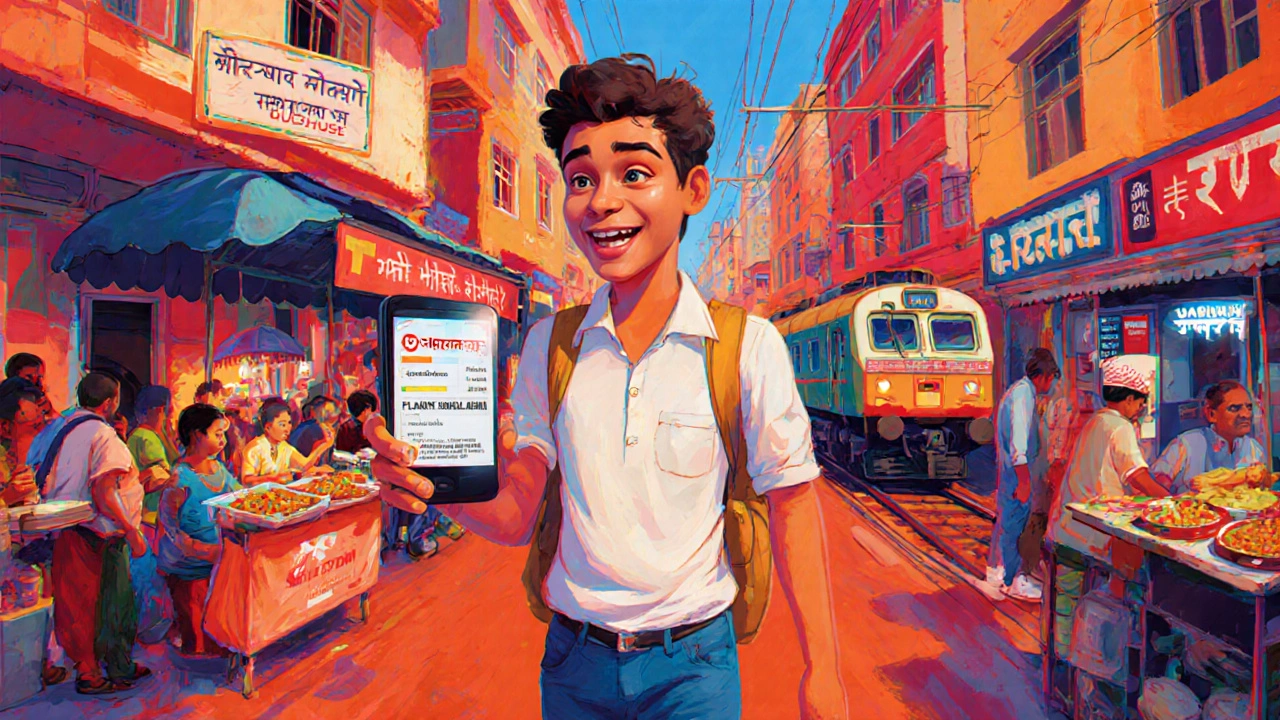SEARCH
Why Is a Trip to India So Expensive? Explained


India Trip Cost Calculator
Cost Breakdown
- International Flight: $1,200
- Visa & Insurance: $80
- Accommodation: $350
- Food & Drink: $200
- Internal Transport: $250
- Entry Fees & Activities: $150
- Miscellaneous (tips, currency exchange): $100
Potential Hidden Costs
- Tourist taxes (5% in Delhi)
- Internal flight surcharges ($30-$50 per flight)
- Health precautions (COVID-19 tests, vaccinations)
- Tips ($1-$2 per meal, $5-$10 for drivers)
Quick Takeaways
- Flights, visa fees, and peak‑season demand are the top cost drivers.
- Luxury hotels and private transport inflate the budget, but budget options exist.
- Exchange‑rate swings can add 10‑20% to your spend.
- Plan for hidden expenses like internal flights, tourist taxes, and tipping.
- Smart timing, local transport, and mid‑range stays can cut the total bill by up to 40%.
If you’ve ever wondered why a trip to India feels pricey, you’re not alone. Many travelers assume India is cheap across the board, yet the average expenditure often exceeds expectations. Below we break down the real cost components, show where the numbers stack up, and give you concrete ways to keep the budget in check.
Travel to India is the act of visiting the South Asian sub‑continent for leisure, business, or cultural experiences, encompassing everything from air tickets to street‑food meals. Understanding why it can be expensive starts with looking at each piece of the puzzle.
Major Cost Drivers
Four main pillars push the price of an Indian adventure higher than many other destinations:
- International Flight Prices - Long‑haul routes from Oceania, Europe, and North America still command premium fares, especially in the high‑season months of October‑December and around Indian festivals.
- Visa Fees are government‑issued charges that vary by nationality, duration, and entry type (tourist, business, e‑visa). For many Western passports, the e‑visa costs range from US$10 to US$100.
- Accommodation spans a huge spectrum, from $5 hostels to $300+ boutique hotels per night. Travelers often gravitate toward the mid‑range market, which can still be pricey in metropolitan hubs like Mumbai and Delhi.
- Internal Transportation includes domestic flights, rail tickets, and private car hires. The rapid‑growth of low‑cost airlines has helped, but peak‑season demand makes flights between major cities expensive.
Each of these pillars is influenced by external factors such as fuel prices, seasonal demand, and currency exchange rates.

Breakdown of Typical Expenses
Below is a snapshot of average costs for a 10‑day trip for a solo traveler, based on data from the Ministry of Tourism (2024) and major travel aggregators:
| Category | Budget | Mid‑Range | Luxury |
|---|---|---|---|
| International Flight | $700 | $1,200 | $2,500 |
| Visa & Insurance | $30 | $80 | $150 |
| Accommodation | $100 | $350 | $1,200 |
| Food & Drink | $70 | $200 | $500 |
| Internal Transport | $80 | $250 | $600 |
| Entry Fees & Activities | $50 | $150 | $400 |
| Miscellaneous (tips, currency exchange) | $30 | $100 | $250 |
| Total | $1,160 | $2,430 | $5,600 |
Even the “budget” column touches the low‑four‑figure range, which many travelers consider expensive compared to neighboring Southeast Asian nations.
Why The Numbers Appear Higher Than Expected
India’s internal cost of living is low, but three dynamics inflate the overall spend for most overseas visitors:
- Visa & Entry Formalities - Some countries still need a traditional visa sticker, requiring travel to an Indian embassy, extra courier fees, and longer processing times.
- Seasonality - Festivals such as Diwali, Holi, and the winter holidays drive hotel occupancy to 90‑100% in major cities, pushing nightly rates higher.
- Currency Volatility - The Indian rupee (INR) has fluctuated 12% against the US dollar in the past year. When the rupee weakens, every local expense suddenly costs more in foreign currency.
Moreover, many travelers over‑estimate the “budget” tier, opting for semi‑luxury properties or guided tours that already belong in the mid‑range column.
Smart Ways to Trim the Budget
Below are actionable tips that have helped travelers reduce the total bill without sacrificing the experience:
- Book Flights during airline sales (typically January‑February and September‑October) and use price‑tracking tools like Google Flights.
- Choose the e‑Visa over a traditional visa whenever possible - it’s cheaper and processed within 72hours.
- Stay in certified mid‑range hotels or boutique guesthouses located a few kilometres from city centres; they offer better rates and still provide safety.
- Travel by train on non‑AC sleeper classes for long distances. The Indian Railways’ “Rajdhani” and “Shatabdi” services are fast and cost‑effective.
- Eat where locals eat - street food stalls, dhabas, and local cafeterias often charge 5‑10USD for a full meal, delivering authentic flavors.
- Exchange currency in advance or withdraw cash using a no‑foreign‑transaction-fee debit card; avoid airport exchange kiosks that charge 15‑20% over the market rate.
- Plan activities independently - buying tickets at heritage sites or hiring a local guide on the spot is usually cheaper than pre‑booked tour packages.
By applying a handful of these tactics, a traveler can often bring the “budget” total down to $900‑$1,000 for a 10‑day adventure.

Hidden Costs You Might Miss
Even after you’ve nailed the major line items, a few extra charges can sneak in:
- Tourist Taxes - Cities like Delhi levy a 5% “tourist fee” on hotel bills.
- Internal Flight Surcharges - Low‑cost airlines add baggage fees and seat‑selection charges that can add $30‑$50 per flight.
- Health Precautions - COVID‑19 tests (if required) and recommended vaccinations cost $50‑$150.
- Tips - While tipping isn’t mandatory, it’s customary to leave $1‑$2 per meal at restaurants and $5‑$10 for drivers.
Factor these into your budget spreadsheet to avoid unpleasant surprises.
Sample Budget Scenarios
Here are three realistic itineraries that illustrate how the same destination can fit different wallets.
- Backpacker Route - Fly into Delhi, use overnight trains to Jaipur and Varanasi, stay in dormitory hostels ($8‑$12 per night), eat street food, and limit internal flights. Approximate total: $1,050.
- Comfort Traveller - Fly into Mumbai, stay in 3‑star hotels ($40‑$60 per night), use a mix of domestic flights and first‑class trains, enjoy a few guided tours. Approximate total: $2,300.
- Luxury Explorer - Direct business‑class flight, stay in 5‑star heritage hotels, private car with driver, pre‑booked cultural shows, and fine‑dining experiences. Approximate total: $5,800.
Even the most economical version surpasses $1,000, which explains why many people label a trip to India as “expensive.”
Frequently Asked Questions
Why do international flights to India cost more than to nearby countries?
Most major airlines operate long‑haul routes to India with limited competition, especially from the Southern Hemisphere. Fuel surcharges, airport fees, and the need for larger aircraft to carry more passengers also push prices up. Low‑cost carriers are expanding, but they still focus on intra‑Asia routes rather than direct trans‑Pacific or trans‑Atlantic flights.
Can I travel across India on a strict $30‑per‑day budget?
It’s doable if you stick to hostels, eat only street food, and travel mainly by public buses and third‑class trains. However, you’ll need to avoid major metros, skip domestic flights, and forgo most popular attractions that charge entry fees. Expect a very basic, rugged experience.
How much does a tourist visa to India actually cost?
For most Western nationals, the e‑visa fee is $10 for a 30‑day single‑entry, $20 for a 1‑year multiple‑entry, or $100 for a 5‑year multiple‑entry visa. Fees can vary based on nationality, so always check the official Indian Ministry of Home Affairs portal before applying.
Is currency exchange a major hidden cost?
Yes. Airport kiosks often charge a 15‑20% markup over the inter‑bank rate. Using a debit card with no foreign‑transaction fees or swapping cash at reputable banks can save you $50‑$150 on a two‑week trip.
Do internal flights in India add a lot to the budget?
Domestic flights are affordable when booked early (as low as $30‑$50 on budget airlines), but during peak festival periods they can rise to $150‑$200. Adding baggage and seat‑selection fees can push a short hop to $80‑$100.